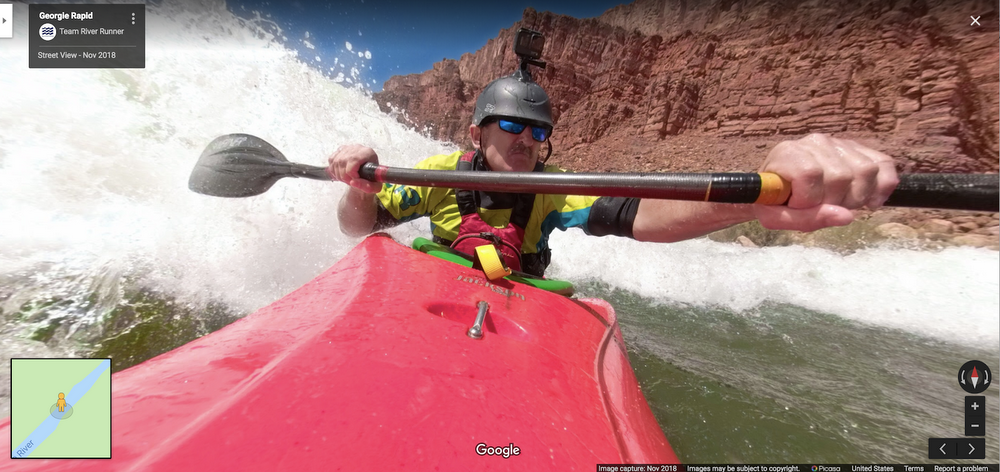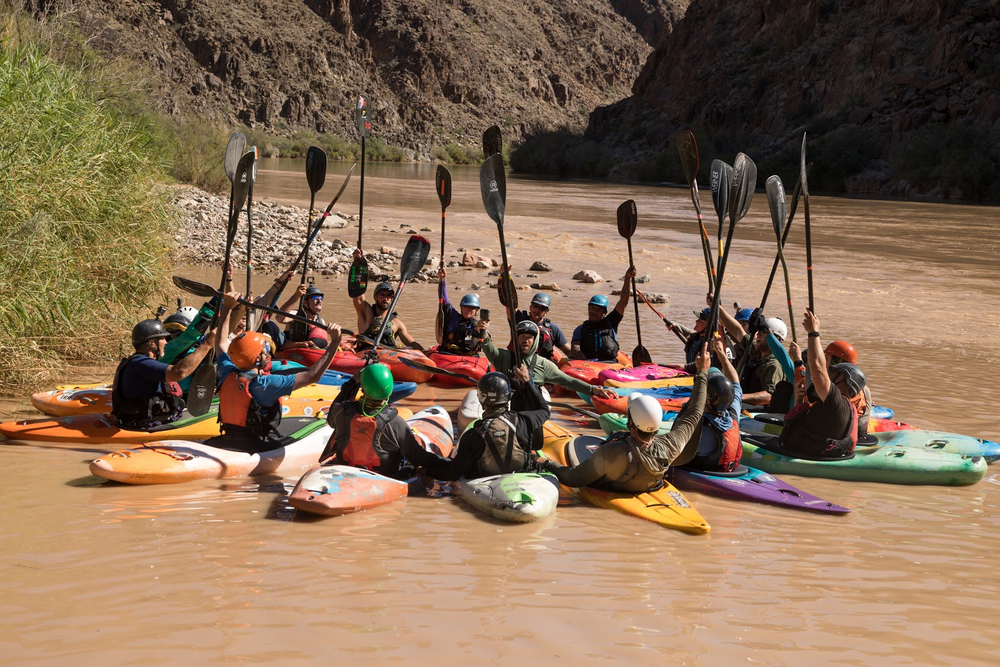Editor’s Note:
Blind veterans kayak the Grand Canyon, with Street View along for the ride
Let me start out by introducing myself: my name is Lonnie Bedwell and I’m from Pleasantville, Indiana, population 120. I’ve been blessed with a full and amazing life—raising three daughters as a single father, serving in the U.S. Navy, and perfecting my chicken noodle soup recipe.
I lost my vision over two decades ago, and was frustrated by how little people come to expect out of a blind person. Fortunately, I benefited from a tight community who supported and challenged me to learn more and do more. Since then, I’ve pushed myself mentally and physically—from climbing and mountain biking to writing a book to dancing with my daughter at her wedding.
I believe we can’t abandon our sense of adventure because we lose our ability to see it, and it has become my goal to help people who live with similar challenges, and show them that anything is possible. In 2013, I became the first blind person to kayak the entire 226 miles of the Colorado River through the Grand Canyon But, I always felt it didn’t mean anything unless I found a way to pay it forward. So I joined up with the good folks at Team River Runner, a nonprofit dedicated to providing all veterans and their families an opportunity to find health, healing, community, and purpose. Together we had the audacious goal to support four other blind veterans take a trip down the Grand Canyon.

[Lonnie lines up to surf the entrance wave of Georgie Rapid Gallery]
Google was keen to support our wild idea of a journey by capturing our exploration in 360 degree Street View. Each member of this journey felt strongly that we must share our experience to inspire and invigorate others—and Street View is a far-reaching platform that can be accessed by anyone, anytime, and from anyplace.
A question I often get is “How do blind people kayak the Grand Canyon?” Well, it starts with grit. And a lot of preparation. Our other visually-impaired team members—Steve Baskis, Kathy Champion,Brian Harris, and Travis Fugate—practiced hundreds of rolls (flipping yourself back up if you go underwater) and ramped up on big rivers all around the country to prepare. From there, it was all about teamwork and trust. Team River Runner pioneered a system in which a guide in front makes a homing noise that the blind kayaker then follows, as you can experience for yourself in this 360 video. Just like we relied on our squadron the military, we relied on each other out there in our kayaks. Our deployments in Afghanistan or Iraq reinforced our ability to work together and survive as a group, which came to life again on this river.
Every single person challenged and pushed themselves on a daily basis. When the earthy warmth of the desert day cooled during the starry nights, delicious cooking smells filled the air, and sounds of music and laughter replaced the roar of the whitewater. I’ll never forget how I felt our last night in the Canyon—so humbled by our team and their devotion to each other. I mean, very few people ever kayak the Grand Canyon, let alone five blind people! We reveled at how far we had come together, but most importantly, how far we could go if set our minds to it. We may have lost our sight, but we didn’t lose our vision.

The team does a paddle salute after finishing at Diamond Creek
While we no longer have the ability to see, we still have the power of our senses. The transformative and healing power of exploring wild and natural landscapes like the Grand Canyon can be experienced, felt, and sensed. We are elated to be able to share it with the world in Street View. You may not be able to feel, smell, and touch it like we did, but experiencing it in 360 seems like a good way to start.














